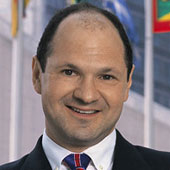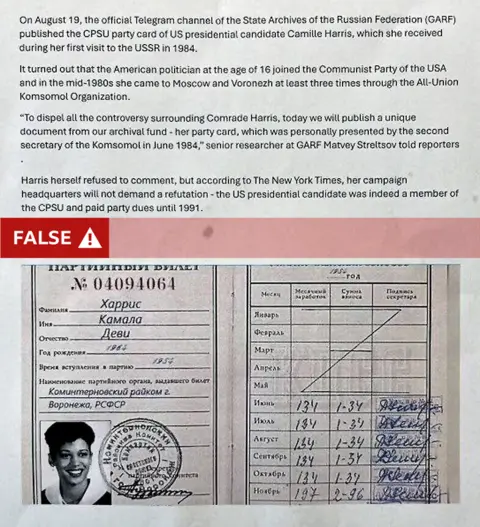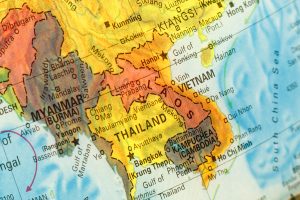
The life, death, and resurrection of the Nestor Makhno monument
Since the Russian invasion of Ukraine, the monument has become a symbol of defiance, identity, and hope
~ Sean Patterson ~
The monument to the world-famous anarchist Nestor Makhno in Huliaipole, Ukraine, received a newly restored head for the city’s 239th birthday. Russian shelling had previously severely damaged the monument in May.
Makhno’s hometown of Huliaipole is located in southern Ukraine, roughly 100 kilometres east of Zaporizhzhia city, just inside the Ukrainian side of the current war’s frontline. The city’s pre-war population of 13,000 has collapsed to less than 2,000 since the 2022 Russian invasion of Ukraine. Those remaining face a daily barrage of Russian artillery strikes. The vast majority of Huliaipole has been damaged or destroyed, including several particularly painful losses in recent months. On August 23, the city’s well-known Museum of Local History burned down after a Russian missile strike.

In this context, Makhno has become a regional and even national symbol of Ukrainian defiance against Russian imperialism. An oft-controversial historical figure, Makhno is known worldwide for leading a successful peasant-anarchist insurgency during the years 1918–1921. The Makhnovist movement battled all belligerent invaders in an ultimately unsuccessful bid to establish an autonomous libertarian territory in southern Ukraine.
Given his complex background, Makhno does not easily integrate into grand historical narratives. Soviet historiography vilified Makhno as a cruel and irrational bandit, while many Ukrainians remember Makhno as a representative of Ukrainian independence and their people’s indomitable Cossack spirit. In 2013, Makhno even became the world’s first anarchist to be memorialized with a state-issued coin.
Between 2006 and 2009, Makhnofest, a grand artistic and cultural event, was held annually on Independence Day. As its organizers emphasized, “Officials may celebrate in Kyiv, but real Ukrainians come to Huliaipole.” At the festival in 2009, the Makhno monument was unveiled in the city centre. It was created by the well-respected local sculptor Vladlen Dubinin (1931–2023). A prolific artist of Ukrainian and Cossack themes, Dubinin completed the monument in three weeks, working from photos of Makhno.

Accompanying the city centre monument was an identical twin statue installed at the former residence of Makhno’s brother, Karp. Before the war intervened, the property was being transformed into the Nestor Makhno Family Museum. While the property was also damaged in shelling, the twin statue has thus far survived.

Since 2022, the monument in the city centre has become a symbol of defiance, identity, and hope. Ukrainian soldiers frequently posed with the statue for photographs and adorned him with their flags. Fears of its destruction led locals to sandbag the monument. In May 2023, the monument was fitted with a vyshyvanka (traditional Ukrainian embroidered shirt).

The restored monument was initiated at the request of the local military administration, who recruited the Kyiv-based sculptor Olexander Berezovchuk. Berezovchuk worked on refashioning Makhno’s head for over a month free of charge.
The head of the Huliaipole City Military Administration, Serhii Yarmak, wrote in his birthday message to the city, “When our symbol of freedom, the monument to Nestor Makhno, was destroyed during one of the shellings, the people of Huliaipole lost hope … Now our father has been reborn, as our Huliaipole will be reborn!” In addition to the head, Makhno is now permanently clutching the blue-and-yellow national flag.

Western anarchists may be confused and even horrified by Makhno’s integration into Ukrainian national themes. Makhno was, in fact, an unrepentant anarchist who rejected state structures and national chauvinism. In his time, he fought against the Bolsheviks and Ukrainian nationalists (although he also made tactical alliances with both at different junctures). Nonetheless, Makhno was profoundly concerned with the free cultural expression and territorial autonomy of Ukrainians throughout his life. His movement was officially called the Revolutionary Insurgent Army of Ukraine.
Of course, elevating Makhno to a hero of the Ukrainian state is anachronistic and runs entirely counter to his anarchism. On the other hand, Makhno is well-suited as a symbol of Ukrainian cultural resistance and anti-imperialism.

How Ukrainians understand their relationship to Makhno and his ideals is an ongoing process and, for Huliaipolians, deeply personal. Whatever protestations Westerners may shout from abroad, the reality is that Makhno and his statue serve as an enduring figure of Ukrainian defiance, autonomy, and freedom in the face of the Russian invasion.














 X/AI-generated image
X/AI-generated image X
X


